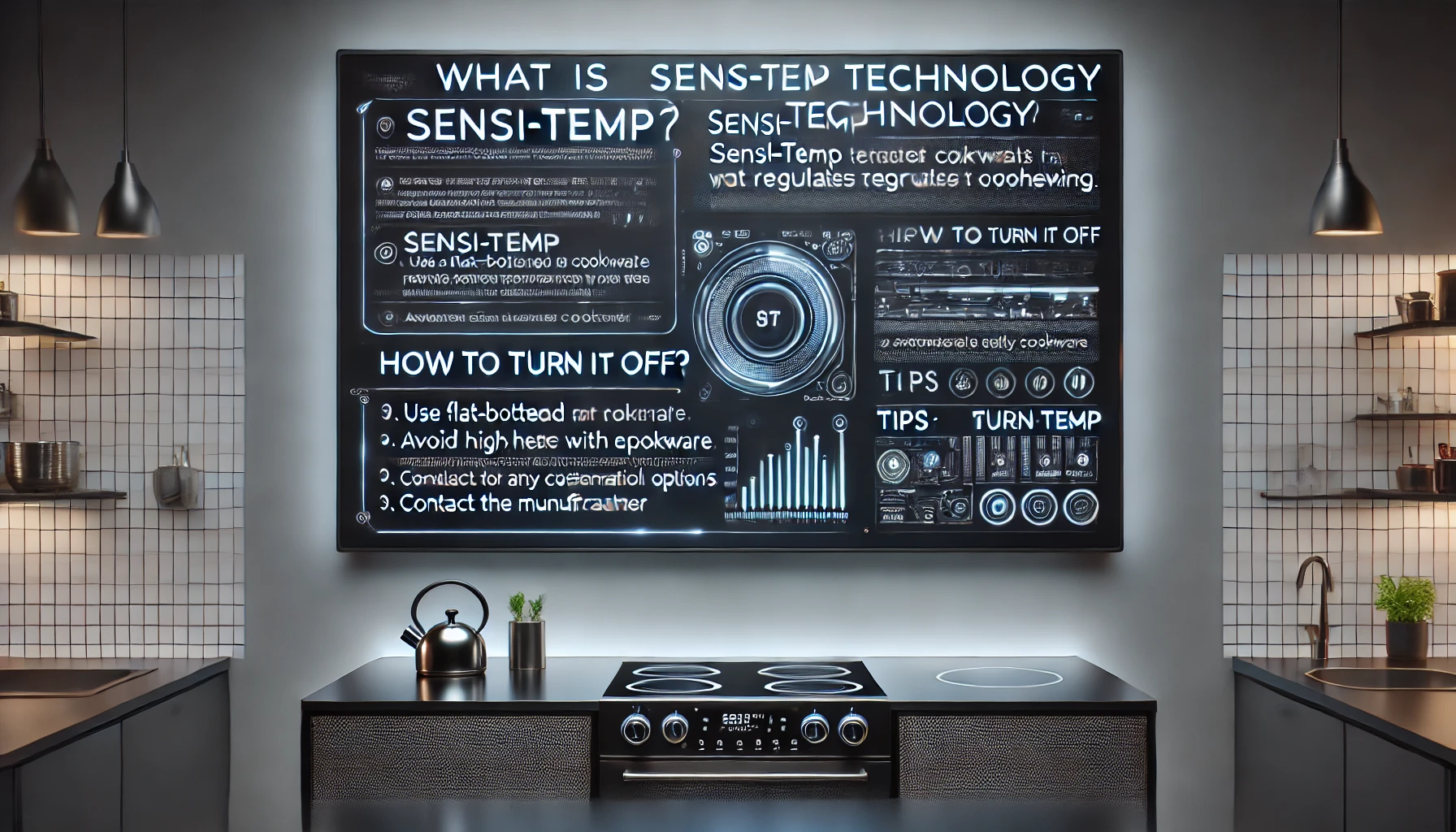Sensi-Temp Technology is a feature found on certain electric stovetops designed to improve kitchen safety. It’s a common addition to many GE electric coil stoves and ranges, helping prevent the burners from overheating by using sensors to regulate temperature. But while it’s meant to add peace of mind, some users find it restrictive and seek to turn it off. Here’s everything you need to know about Sensi-Temp Technology, why it’s used, and if it’s possible to disable it.
Understanding Sensi-Temp Technology
Sensi-Temp Technology integrates with the heating coils of your stove to prevent accidental overheating. It uses sensors built into the burners to detect when cookware is becoming too hot. When a certain temperature threshold is reached, the sensor activates to automatically reduce the burner’s heat, which prevents the potential for burns or fires caused by overheating.
Why Was Sensi-Temp Technology Developed?
The technology primarily aims to:
- Reduce Fire Risk: By preventing temperatures from getting too high, Sensi-Temp Technology minimizes the risk of fires caused by overheating.
- Avoid Burns: It also helps reduce the chance of burns by ensuring cookware doesn’t become excessively hot.
- Meet Regulatory Standards: Modern safety standards encourage the use of temperature-limiting technology to protect consumers, which is why many new stoves come equipped with Sensi-Temp.
How Sensi-Temp Technology Works
The Sensi-Temp sensor is integrated directly into the burner. When it detects that the temperature of the cookware has reached a certain threshold, it temporarily reduces or even shuts off the heat. The burner then automatically cycles the heat back on once it detects that the temperature has lowered to a safe level.
Pros of Using Sensi-Temp Technology
- Enhanced Safety: Reduces the risk of overheating and associated fire hazards.
- Energy Efficiency: Prevents excessive energy usage by automatically regulating temperature.
- Easier to Maintain Temperatures: Helps keep cooking at a steady heat level.
Cons of Sensi-Temp Technology
- Limited Control Over High Heat: For certain recipes, Sensi-Temp may cut the heat too early, interrupting the cooking process.
- Slower Heating: Since it limits maximum temperature, heating times might be slightly longer.
Can You Turn Off Sensi-Temp Technology?
One question many users have is whether it’s possible to turn off Sensi-Temp Technology for more direct control over their stove’s heat output. Officially, Sensi-Temp Technology is a built-in safety feature and isn’t intended to be disabled. There is no switch or setting to “turn off” Sensi-Temp, as it’s integrated directly into the burners.
However, there are a few alternative approaches users have tried to work around this limitation.
Alternative Ways to Work Around Sensi-Temp Technology
While not recommended by manufacturers, some users have found ways to adapt their use of Sensi-Temp burners for better control.
1. Use Non-Sensi-Temp Burners
Some GE stoves have a mix of Sensi-Temp and standard burners. If this applies to your stove, try using the standard burners for tasks requiring higher or more constant heat, as they won’t have the same automatic shutoff feature.
2. Adjusting Cooking Techniques
Consider adjusting your cooking methods to accommodate the cycling effect of Sensi-Temp Technology. For example, use lower settings initially to avoid reaching the automatic shutoff threshold and allow the burner to remain active for longer.
3. Replacing the Burners (Not Recommended)
Some users explore replacing Sensi-Temp burners with standard ones, but this is not recommended due to potential warranty voids, compatibility issues, and safety risks. Always consult a professional or the manufacturer before making any alterations to your stove.
Common FAQs About Sensi-Temp Technology
- Why does my burner keep shutting off? Sensi-Temp detects high temperatures and may reduce heat to prevent overheating. This is normal behavior to keep you safe.
- Can I replace Sensi-Temp burners with regular burners? It’s not generally recommended, as doing so can lead to safety issues and may void the warranty on your stove.
- Why can’t I turn off Sensi-Temp? Since it’s a built-in safety feature designed to protect against fire and burns, Sensi-Temp cannot be disabled through traditional settings.
Conclusion
Sensi-Temp Technology adds a layer of safety to your cooking by regulating heat to prevent overheating. While it’s not possible to disable Sensi-Temp directly, adapting your cooking techniques and using standard burners when possible can help manage the limitations. If you’re concerned about Sensi-Temp interfering with your cooking, consider discussing it with the stove manufacturer for advice on safe workarounds.



